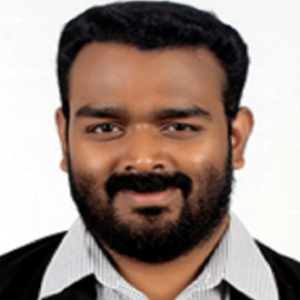Zdzislaw Chilmonczyk, National Medicine Institute, Poland
Serotonin exhibits multiple non-neural functions involved in essential hypertension, early embryogenesis, follicle maturation and behaviour. Growth stimulatory effects of the neurotransmitter have been described for a variety cell types. 5-HT was found to induce migration of the [....] » Read More
































Title : Hypothesizing the Central Nervous Systems Genius to Trigger and Self-organize to Higher States of Complexity as Epitomized in the Case of Noah Wall the Boy Born With Only 2% of His Brain
Ken Ware, NeuroPhysics Therapy Institute and Research Centre, Australia
Noah was born with an estimated 2% of his brain as the result of a cephalic disorder, with the remainder of his cranial cavity being filled with cerebrospinal fluid. This signifies an extreme case of Hydranencephaly. Hydranencephaly is a condition that affects under 1 in 10,000 b [....] » Read More
Title : Synchronization & Bifurcations in Brain Activity
Marat Akhmet, Middle East Technical University, Turkey
Complexity and synchronization in models are necessary for research in neuroscience. In our talk the complexity will be present through special type of bifurcations - the medusas bifurcations in the Cowan-Wilson model, they have been introduced in our recent papers.&n [....] » Read More
Title : Brain dynamics of normal and abnormal learning and memory consolidation: Multiple hippocampal functions in cognitive, adaptively-timed cognitive-emotional, and navigational learning
Stephen Grossberg, Boston University, United States
This talk provides a self-contained summary of neural models of normal and abnormal learning and memory consolidation in which the hippocampus plays an important role. As heuristically described in the Multiple Trace Theory of Moscovitch and Nadel, the role of the hippocampus in [....] » Read More
Title : Opiate exposure in the developing brain and toxic stress in early childhood: How brain structure and function is altered and impacts life-long health
Mary Payne, Marshall University School of Medicine, United States
Toxins and stressful environments can alter brain structure and function. More importantly, the developing brain in utero is particularly susceptible to exposures to medications and substances of abuse. In my community in rural West Virginia, we have unfortunately experienced a d [....] » Read More
Title : Evaluation of short term treatment with NAD+ precursor Nicotinamide Riboside on cognitive and mitochondrial function in patients with MELAS
Natasa Dragicevic, University of Connecticut Health Center, United States
Primary goal of this study was to measure effectiveness of nicotinamide riboside as direct precursor for coenzyme NAD+ in patients with mitochondrial DNA mutation 3443 and MELAS (Mitochondrial Encephalopathy, lactic acidosis and stroke like episodes) syndrome. Primary outcome wer [....] » Read More
Title : CB1-Dependent LTD in Ventral Tegmental Area GABA Neurons: a Novel Target for Marijuana
Jeffrey Edwards, Brigham Young University, United States
The ventral tegmental area is necessary for reward behavior where dopamine cells are critical for reward motivated behavior and attaching salience to novel rewarding stimuli. These dopamine cells are regulated by neighboring inhibitory GABA cells. Synaptic modifications known as [....] » Read More
Title : Epigenetics and Mental Health; Implicating the role of DNA Methylation in Rett Syndrome
Mojgan Rastegar, University of Manitoba, Canada
In this presentation, I will mainly focus on an epigenetic neurological disorder that is caused by a genetic mutation, namely “Rett Syndrome (RTT)”. RTT is a neurodevelopmental disease that is caused by MECP2 gene mutations. The X-linked MECP2 gene [....] » Read More
Title : Reintegration of impaired motor-cognitive interactions in diseases and injuries of the brain buy the author’s method of kinesitherapy in the pneumatic suit “Atlant”
Valida Isanova, Kazan State Medical University, Russian Federation
The nervous system disorders and mental impairments still remain to be among the main causes of children and adults incapacity. Currently neurorehabilitation has a particular relevance and importance among people suffering from nervous system disorders, incapable of moving [....] » Read More
Title : Neuromodulation – invasive and noninvasive stimulation in the treatment of orofacial pain
Richard Rokyta, Charles University in Prague, Czech Republic
It will be described the contemporary neuromodulatory methods – e.i. both invasive and noninvasive ones. As a as stimulation were used electrical current (both alternative and constant current ) and magnetic field stimulation. Also the noninvasive stimulation using th [....] » Read More
Title : Typical benzene poisoning on brain magnetic resonance imaging
Yan Wang, Chengdu fifth people’s hospital Chengdu, China
Benzene poisoning is rare; acute and chronic benzene poisoning mainly result in damage to the central nervous system. Here we report a patient with benzene poisoning who is mainly affected by central nervous system damage. Case report A 38-year-old man who had been exposed [....] » Read More
Title : Surgical treatment of severe brain injury
Csókay András, Military Hospital, Chief of Neurosurgery Department, Hungary
One of the largest mistakes of the modern science may be the analyzing of the efficacy of the medical treatment by the rule of the evidence-based medicine in the state around the death. What are the most important bioethical rules in the lifethreatening extreme emergency or hopel [....] » Read More
Title : Misfolded Proteins in the Retina
Umur Kayabasi, Bahcesehir University, Turkey
Background: Recent research suggests that Tau is the culprit lesion along with neuroinflammation in the etiology of Alzheimer’ s Disease ( AD ). Retina is the extention of the brain and is the most easily approachable part of the central nervous system. Detection of th [....] » Read More